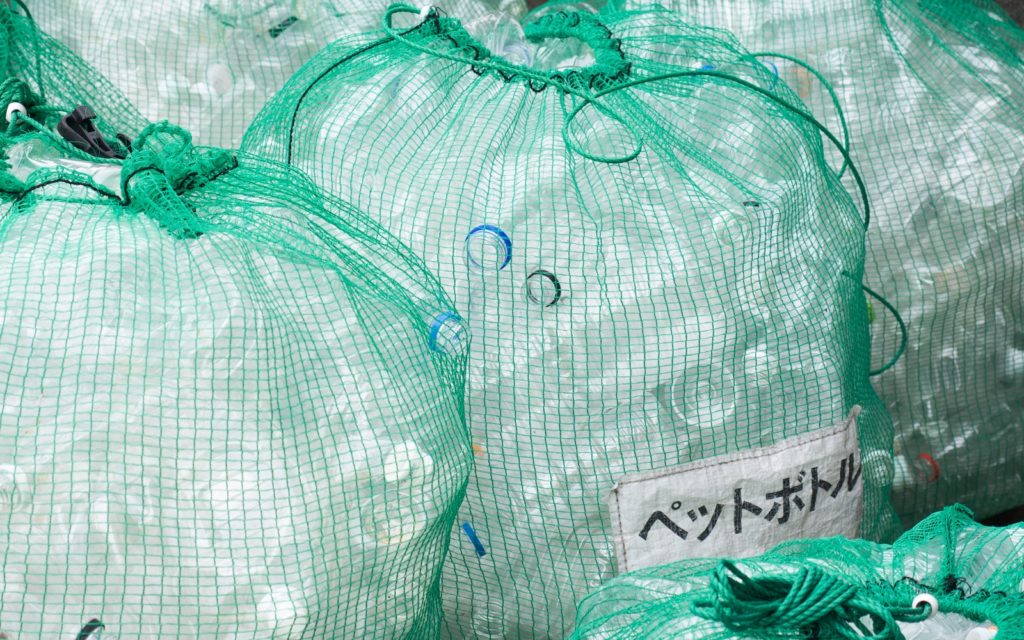It’s fair to say that a lot has changed since I moved away from Osaka to my new home in Nagano. It’s a lot quieter, it’s a lot less stressful and I have more money in the bank at the end of the month. However, it’s not without its challenges, either.
One challenge I hadn’t anticipated — and on reflection, it seems embarrassingly obvious — was the simple notion of taking out my garbage.
Now, in Osaka, it was simple. There was a large dumpster on the ground floor of our apartment building and any time (day or night), we could simply take our bags of rubbish there, throw them inside and they would be collected within a day or two.
Sorting out your trash into different types, using specific bags and being sure to put it out on the right day and time were simply not considerations then. It was simple and straightforward.
I didn’t realize, however, that this is very much the exception rather than the rule. For several decades now, Japan has been a world leader in encouraging its citizens to recycle as much of their waste as they can.
 Photo: G Witteveen
Photo: G WitteveenEvery city in every prefecture has its own regulations and rules for sorting out the trash but almost everywhere in Japan takes a far more regimented approach to recycling than Osaka.
I seem to have moved from one extreme to another. Here in Nagano, locals take extreme pride in being the No. 1 prefecture in Japan when it comes to recycling.
It’s not difficult to see why. Upon registering my address at the local city hall, I was given not only an extensive guide to the different types of rubbish and the days and locations for collection but also a sheet of what looked like tickets.
I asked: “What are these for?” The staff replied: “These are for your garbage bags. One voucher allows you to buy one set of 10 bags.”
Yes, even the garbage bags themselves are rationed around here to discourage waste. Of course, families and couples get more vouchers, however, as a single man, living alone, one bag of burnable rubbish per week is plenty. This is my own personal observation, but given that we are limited to about 60 bags per year, it’s one that the city more or less seems to agree with. Other garbage types do not need a special bag, so I can throw out as much of them as I need.
For the specialized bags of burnable and non-burnable trash, though, these can be purchased in packs of 10 from local supermarkets upon presentation of one of your vouchers. My city in particular is very strict about this, and other types of rubbish bags will not be accepted.
If you have any questions about recycling or garbage collection specific to your city, then going to your local city hall or ward office should be the first port of call.
So, looking at things more generally, how is trash separated in Japan and what do you have to do to keep on the right side of your neighbors? Let’s break down the do’s and don’ts below.
Do’s and Don’ts
There are four basic types of garbage in Japan, so, obviously, wherever possible, I recommend separating your items into these categories as you finish with them. These are:
- Moeru (燃える) gomi or burnable/combustible garbage (this includes paper, food wrappings and boxes, food waste, peelings, etc.)
- Moenai (燃えない) gomi, or incombustible garbage (glass, metal items, etc.)
- Pura or plastics garbage (food containers, bottle caps, plastic wrap, etc.)
- Polyethylene terephthalate (PET) — more simply known as plastic — bottles.
Depending on where you are in Japan, these four categories may be further subdivided into smaller groups, but as a general rule: if you can keep to these four separate types, then you are doing OK.
Within these different categories of trash, there is also additional preparation that needs to be done. It may sound like a lot of hassle at first, but over time you get used to it. Trust me when I say that your neighbors will appreciate the effort.
Yes, even the garbage bags themselves are rationed around here to discourage waste.
Burnable

Let’s look at burnable trash first of all.
Of all the trash groups, this is the simplest to manage. Simply bag it up, using the appropriate bag for your city, and make sure to take it out on the appropriate day, which is Monday in my case. Burnable trash will be collected at least once per week, but this may be more frequent if you live in a large apartment building or built-up urban area. Take note that trash generally isn’t collected on national holidays, so make sure that you keep aware of the schedule.
Unlike in most other countries, trash won’t be collected from directly outside your place, again unless you live in a large apartment building. Instead, you’ll need to take it along to your local “gomi station.” This is a small, boxed off area in the neighborhood where you will take your rubbish to be collected on the designated day. Don’t try to take any trash there on any day other than the one designated. The station will be locked (in some cases) and any trash that isn’t inside the station will not be collected. Also, if, for example, your trash is being collected on Wednesday, do not take it out on Tuesday night. This is frowned on by locals and will possibly incur the wrath of your local neighborhood committee.
Typically, there will be a designated time of an hour or two in the morning, when the station is open before pick up — this is when you should take out your trash. As an example, my burnable garbage goes out on Monday mornings between 6:30 and 8 a.m. It can be a pain to get up early if you work irregular hours, such as being an eikaiwa (English conversation school) teacher. However, since I would be leaving around 7 or 7:30 am to go to work anyway, it’s very convenient for me.
Non-burnable

Non-burnable rubbish will also be collected from the gomi station but will go out on a different day. Non-burnable trash is collected less frequently, perhaps only once or twice a month.
If you have items that are too big to fit in one of the assigned bags (for example, an old microwave or TV) then you will need to call the local city office and arrange to have the item collected. A fee is usually charged for this service, which is usually around ¥2,000 or ¥3,000. If you have a car, there may also be designated recycle centers in your area for you to take such items.
Plastics are a little more complicated. First, before you throw out any containers, rinse them thoroughly to remove any food waste in or crusted on them. Bottle caps and the bottle labels will go with the regular plastic waste, however, the bottles themselves should be separated into a different bag. More on them later.
When the day comes to take out the plastic garbage, in many cases the location will be different from your regular gomi station, though still nearby. This is due to the fact that plastics are usually collected by a different type of vehicle than burnables. Whereas we all place our burnables in individual bags, in many areas, plastics are all collected together into just a few extremely large bags, for more efficient recycling. Many local areas will have volunteers who help out on collection days, by checking the trash as it is poured into the large collection bags. So make sure you don’t accidentally put any non-plastic garbage in there, as it could cause you some embarrassment when it comes time to pour out your plastics.
PET bottles

Finally, we come to PET bottles.
These will be collected from the gomi station, usually two or three times per month. However, you don’t necessarily need to dispose of them there. Several supermarket chains, such as my local Watahan, actually encourage customers to recycle their bottles at their stores. First, you’ll need to sign up for the store’s point card scheme. Then, outside the entrance to the supermarket, you will sometimes find recycling machines for cardboard, paper and bottles. For each kilogram of paper or bottles you put into the machine, you’ll get one store point. In most cases, these points can later be redeemed towards the price of your shopping. It’s not a life-changing amount by any means but over time you will notice a savings.
I’m giving the example of Watahan here — since it’s my local — but I know of several other nationwide supermarkets that offer similar. I’ve seen branches of Life, Gyomu and even AEON that offer recycling facilities and incentives. It will, of course, vary from place to place, so its best to go and ask the staff at the grocery store in your area for more details.
To be honest, sorting the trash isn’t half the hassle I imagined it would be. It’s just one of those things, like riding a bike, going to the gym and so on. Once you’ve done it a few times and formed the habits, it doesn’t even seem like a chore at all — it becomes second nature. It’s also nice to know I’m doing my bit to help save the world, too — one bag of trash at a time!
How is rubbish collected where you live in Japan? Does your community have more or less strict rules? Let us know in the comments!





This site is protected by reCAPTCHA - Privacy Policy - Terms of Service